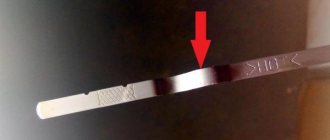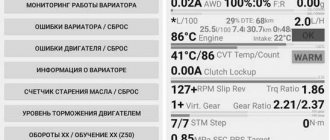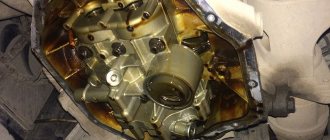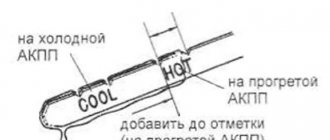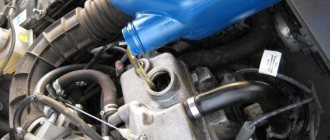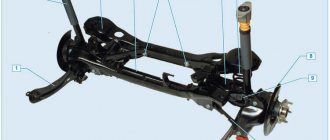Checking the oil level in the Honda Fit and Honda Jazz variator
1 launch of Fit after replacing CVT filters
Based on this, it is not recommended to perform a complete hardware oil change in the Honda Fit variator. Honda fit variator operation Video:
Hi all! Today I decided to write detailed instructions for changing the oil in a Honda Fit variator (Honda...
Without regret, throw away the old rubber seal ring for the plug; it is disposable. Wipe the cork several times with a clean rag to remove any shavings.
The replacement itself will cost much less. You can compare the old oil with the new one - you will definitely notice the difference. Changing the oil in the Honda Fit variator
Based on this, it is not recommended to perform a complete hardware oil change in the Honda Fit variator.
Especially on cars with high mileage. This is due to the fact that during operation, various deposits form inside the variator, which can be washed away during replacement under pressure.
Recommendations for extending the life of the variator and oil
To avoid putting your car through repairs again, it’s best to follow these tips:
- You should not move away immediately in winter. It is necessary to warm up the car to avoid metal fatigue;
- From time to time it is necessary to inspect the sensors to ensure that they are free of dirt. You should also check their integrity - this way you can avoid false positives;
- if you have problems driving a car, you need to study the error codes issued during diagnostics;
- cleaning the radiator during repair will also increase the service life of the oil;
- you should not resort to partial replacement of the fluid inside the variator - only a complete change will ensure normal operation;
- you cannot drive at high speed for a long time - a regular passenger car is not designed for such loads;
- Constant use of a car with a CVT is also unacceptable for towing other vehicles.
The oil must be stored at a positive temperature, away from sunlight, and work must be carried out only indoors to prevent debris from getting into the liquid. If there is a mileage of more than 60 thousand kilometers, replacing filters is not discussed - the old copy must be removed in favor of a new one, since cleaning is useless.
Old and new oil filters
Procedure for changing the oil in a Honda Fit variator
Preparation for changing the oil in the Honda Fit variator includes the following steps:
- Determining the level of transmission lubrication (using a dipstick);
- Placing the car on a stable horizontal platform;
- Preparing the necessary tools: Pliers and a set of screwdrivers;
- Keys for working with drain plugs;
- Thick gloves;
- Synthetic wipes for car parts care;
- Buckets, cans or other containers for disposal of used oil;
- Funnel for pouring in new gear lubricant.
The peculiarity of changing the oil in a Honda Jazz variator is that in no case should you drain the used fluid from the gearbox if the car’s engine is not allowed to cool. Transmission lubricant heats up to a temperature of 120 degrees Celsius. If the liquid is not allowed to cool, serious burns may occur.
The procedure for replacing transmission lubricant in the Honda Fit variator is carried out in 2 stages:
- Draining used technical fluid;
- Filling the unit with new lubricant.
Let's talk in more detail about each of the points mentioned above.
Oil drain
Many car enthusiasts prefer to take care of their car systems themselves. But how to properly drain the oil from a Honda Fit CVT? Step-by-step instructions are presented below:
- The functional mudguard is removed;
- Place the drain container directly under the vehicle's CVT transmission;
- The variator drain plug is unscrewed;
- The spent technical fluid is drained into prepared containers.
It is important to take into account that transmission lubricant has a fairly dense consistency, so it will not leak out quickly. You should not rush and attempt to accelerate the natural release of the used technical substance.
Flushing the variator
Flushing the Honda Jazz variator is not a mandatory procedure when changing the technical fluid in the gearbox. Moreover, it is not recommended to flush the system yourself due to the fragility and complexity of its elements. The car owner should contact qualified employees of the nearest Special Service Station (STS). The work process of a service station employee, or rather his actions step by step, is described below:
- Placing the car in a horizontal suspended position;
- Adding the contents of 1 can of flushing agent to the recycled technical liquid;
- The engine starts for a time calculated by the employee himself;
- The engine is turned off and the flush is drained along with the used transmission lubricant;
- New transmission lubricant is poured into the variator hole.
The presence of an unqualified car owner during this procedure is excluded.
What kind of oil should I use and how much?
Owners of a Honda Jazz car fill the engine with mainly oils with a viscosity of 0W-30 and 5W-30. The last option is used more often.
For Honda cars, there is an original oil that is recommended for use by official dealers and sellers - Honda 5W-30. However, buying a brand is an expensive business, so you can take any more or less normal company on the market.
The amount of oil needed is positioned for each specific engine, its configuration and power.
Engine / Oil quantity
1.3 L13A1 - 3.6 l; 1.2 L12A1 - 3.6 l; 1.2 2V - 3.5 l;
Do not forget that in addition to the lubricating fluid itself, you also need to change the cleaning filter or filter element.
Belt replacement
During repairs, as well as when necessary, the owner of a Honda FIT is faced with the problem of replacing the variator belt. This service is very common and does not cause any difficulties for experienced specialists to perform.
The belt must be changed both according to the regulations and when symptoms of a violation of its integrity appear. Cracks, tears, and abrasions ultimately lead to element failure, the consequences of which will take a long and expensive time to eliminate.
During technical manipulations, it is important to ensure cleanliness and order around the box - getting foreign objects inside the box is strictly prohibited. The replacement process involves removing the crankcase and pulleys, which requires tools and devices available to service specialists
The replacement process involves removing the crankcase and pulleys, which requires tools and devices available to service specialists.
Cost of service for replacing the variator belt
You can check the price of the service by phone. Please note that you will also have to purchase the belt itself and some consumables that come with the element.
Let's get started
It is important to remember that changing the oil should only be done when the car is warm. It is believed that much more hot oil will spill out than in cool mode. In addition, there is a high probability that almost all the metal shavings and other deposits will come out along with the heated oil. To warm up the engine to 60-70 degrees, it is enough to drive around the city for 10-15 kilometers, allowing for frequent traffic light stops and gas changes. Then you can proceed to the procedure, which consists of the following steps:
How to choose the right oil for the Honda Fit variator?
All transmission lubricants for cars are divided into:
- Original - substances created by the same manufacturer as the vehicle itself;
- Analog - produced by third-party companies, but suitable for the Honda Fit CVT in all respects.
The main original and available types of oils intended for the Honda Fit CVT transmission are presented below:
- Honda Ultra HMMF (Honda Multi Matic Fluid) is the most suitable brand of oil for the Honda Fit variator, sold in cans and buckets of 4 and 20 liters. The undoubted advantage of this particular transmission lubricant is that it is original in relation to the brand of car in question.
- Honda CVT-F (Continuously Variable Transmission Fluid) is an American-made analogue of HMMF. This substance is slightly inferior in its characteristics to Honda Multi Matic Fluid, but it is used by motorists no less often than the original mentioned above.
The recommended analogue oils for the Honda Fit variator are Idemitsu Extreme CVTF and Aisin CVT CFEX. However, if it is possible to purchase an original technical fluid, it is better to give preference to it.
Selecting transmission oil
The car will work for a long time if you carry out diagnostics and change the oil in a timely manner. What kind of oil to pour into the Honda Fit variator? For Honda Fit, you should use original transmission oil (CVT-F / HMMF). This fluid is intended exclusively for CVTs. It should be noted that they are reasonably priced. When choosing analogues, there is a risk of reducing the working capacity of the gearbox. There is a danger in using this oil in an automatic transmission.
The classic Honda Fit requires 3 quarts of transmission fluid. With each complete change of fuel in the variator, it is recommended to change the filters related to the gearbox. Changing the oil in the Honda Fit variator, done in a timely manner, will delay the need for a major overhaul of the gearbox.
Practical advice on choosing oil in a Honda automatic transmission
Car manufacturer Honda designs and manufactures its own vehicles. Together with the machine, the company's engineers have developed special additives that they add to the oil. Therefore, you should use the original oil to change the fluid.
Full and partial oil change in automatic transmission Honda Accord 7
If a car owner buys a regular Idemitsu ATF, a concern that develops lubricant specifically for Honda, then he will not find these additives in it. Since they are added only at the special request of the company.
What kind of transmission fluid do you buy and pour into your car? Write in the comments.
Original oil
You can see what original automatic transmission oil is in the automatic transmission and for which vehicles it is suitable in the table.
| Lubricant type | Car modification | Automatic transmission type | Quantity (l) |
| Honda ATF Z 1 (No. 08266-99904) | Honda CR-V | Machine | 4 |
| Honda HMMF Ultra (No. 08260-99904) | Civic | Variable speed drive | 4 |
| ATF Variable | Honda Fit, Honda Jazz | Variable speed drive | 1 |
Attention! I do not recommend using oils based on Dexron III. If you see this inscription on the dipstick, then know that it means that you need to fill it in order to get to the service station. Since this type of lubricant at elevated temperatures turns into a liquid that only vaguely resembles a lubricant.
The manufacturer also advises using ATF DW1 oil only for vehicles younger than 2011.
Analogs
Analogues of the original lubricating fluid in a Honda automatic transmission include the following oils:
- Honda Dual Pump Fluid DPF II (No. 082009007). For use in the US market only. This type of lubricant has excellent protective properties against wear of mechanical parts at both high and low temperatures;
- Honda VTM 4 (No. 082009003). Used on European Honda Pilot cars. Also used for filling into transfer case.
ATF DW 1 is a synthetic oil and is recommended for use only in machines that are prepared to operate on synthetics. This transmission fluid is considered an improved version of ATF Z1. Therefore, it is recommended for cars manufactured in 2011–….
What have you heard about the above Honda oils? Do you use any of them?
Conclusion
The readers were presented with the best transmission oils - the originals, as well as more affordable analogues. In any case, the final choice is up to the buyer. The main factors by which you should choose an oil are compliance with the parameters specified in the user manual. It is also advisable to fill in synthetic oil, without any additives or additives. The level of tolerance and viscosity must also correspond to the technical data set out in the passport. With original oils everything is clear - there is no doubt about their quality. As for oils with multi-approval, it can be clearly stated that such a liquid will definitely not harm the Honda Fit CVT, since it is suitable for HMMF approval.
Changing the oil in the variator Honda Fit and Honda Jazz :: OILS-MARKET.RU
Hi all! Today I decided to write detailed instructions for changing the oil in the Honda Fit and Jazz variator. We have already published material on the website on the correct selection of oil for the Honda Fit variator. In the article I told you what kind of oil can be poured into the variator. We looked at original oils, and also did not forget about analogues. In general, if you haven’t read it, I recommend you read it. And today I decided to expand the old article a little and write about a DIY replacement.
Modern CVTs are fairly reliable car components. But reliability itself consists of careful attitude and timely service. It is important not only to choose the recommended fluid, but also to change it correctly. Due to design features, the Honda Fit CVT filter is located inside the box. Therefore, without a complete analysis it is impossible to get to it. Most Honda Fit cars are additionally equipped with an external automatic transmission filter, which is similar in appearance to the engine oil filter. It can be replaced without problems. Based on this, it is not recommended to perform a complete hardware oil change in the Honda Fit variator. Especially on cars with high mileage. This is due to the fact that during operation, various deposits form inside the variator, which can be washed away during replacement under pressure. This will cause clogging of the variator filter, which will undoubtedly affect its operation. And after that you will have to completely disassemble the box.
For Honda Fit cars, it is recommended to perform a partial replacement at a short mileage interval, and then repeat the replacement again. This way most of the liquid will be replaced. The replacement itself will cost much less. And the probability of “killing” the variator in this case will be extremely low.
Instructions for partial oil change in the Honda Fit variator
Important!!! All work is performed on a fully warmed up engine.
1. The first thing to do is gain access to the underside of the car. This means that the car needs to be driven onto a pit, overpass or lift. In extreme cases, you can get by with a jack. This is up to you. It all depends on your imagination. The main thing is not to forget about safety.
2. Remove the engine protection, if installed.
3. Unscrew the drain bolt as shown in the photo below.
4. Drain the old ATF into a previously prepared container. A 5L PET bottle with a funnel is perfect here. About 4 liters of transmission fluid should drain from the box.
5. Screw the drain bolt into place. The drain bolt has a built-in magnet, so it should be washed before installation.
6. New oil is poured into the hole in the variator dipstick. For convenience, it is better to use a funnel with a narrow spout and a small extension hose. This is also a matter of fantasy. The process is not important, the end result is important. And it is important for us that the new oil ends up inside the Honda Fit variator.
Important!!! Dirt and other foreign particles should not get into the variator through the dipstick hole. Always keep it clean!
7. It is better to measure the volume of drained oil before adding new oil. And pour exactly the same amount into the box. Then warm up the variator and check the level.
Checking the oil level in the Honda Fit variator
You can check the oil in the Honda Fit variator using a dipstick. (In the figure below indicated by the letter A)
To do this, it is necessary to warm up the engine to operating temperature. With the engine running, go through all the variator positions one by one with a slight delay. After which the engine will turn off. We take out the dipstick and wipe off the oil with a lint-free cloth. Then insert the dipstick all the way and immediately pull it out. The oil level should be between the minimum and maximum marks.
That's all. Now you know how to change the oil in a Honda Fit variator yourself, and also quickly and easily check the fluid level in the box. The only thing I would like to add is the timing of replacement. It is better to change the oil in the Fit variator at least once every 45,000 km. And if the car is used in difficult conditions, then the interval should be reduced to 25-30 thousand km. Follow this condition and then your car’s variator will serve you faithfully for many years! See you again!
Checking the Oil Level in the Honda Fit CVT
Honda Fit. changing the oil in the variator
Before buying a car, many people try to choose a model that suits them perfectly, including technical specifications. Some prefer automatic transmission, some prefer manual despite the highest fuel consumption, others prefer CVT
, which combines the advantages of the first 2 gearboxes. Its advantages include low fuel consumption, no jerking when changing gears and the ability to transmit more torque.
Pros and cons of MPA
The first solid waste produced was not particularly reliable, but after some time the quality of the products improved significantly thanks to the competent use of modern equipment, technologies and materials. In addition, the oil used for these gearboxes has been upgraded, resulting in longer service life. In general, this is considered a disadvantage: it needs to be changed more often than manual and automatic transmissions, but the complete set makes a difference in comfort and fuel economy.
Modern Honda Fit CVT models have a service life of 200,000 km without any defects, but this gearbox is guaranteed by timely oil changes and careful handling. According to the technical documentation of the car, the special fluid in the variator should be replaced every 20-30 thousand km, in other words, after one engine oil change. The downside is the lack of cost savings, but the health of the Honda Fit depends on timely changes.
The downside of the KVT is the difficulty of going uphill: if you're on a hill above 40 degrees, the HRT will jump around a lot as the engine speed increases. The Honda Fit should not be running for a long time in this mode: this may become a prerequisite for burning out the transmission. Balanced option. carefully go down the flat section of the road and go up the hill from acceleration. In fact, the extra couple of minutes spent on the road will not make a strict difference, but you will have to pay a lot of money to fix the CVT.
How to determine the condition of the variator when buying a car
When buying a used car, it is better to examine the condition of the transmission, especially if it is a CVT type. An illuminated variator is not difficult to identify. the accelerator pedal is fully depressed and the behavior of the tachometer needle is immediately monitored. Increasing speed up to 4 thousand and maintaining vehicle speed up to 50 km/h is an excellent opportunity to wear out the wheels of the variator. During normal operation of the variator, the tachometer needle will rise at a speed of over 5 thousand rpm at a speed of 80 km/h, in addition, the engine should not jerk or spin when braking and accelerating. If this is not excluded or the tachometer needle is constantly jumping, it is possible that the expanding and contracting discs have suffered scratches and impacts during which the belt was pinched.
check the oil level in the variator
The quality and duration of operation of at least one mechanism depends almost not only on the production materials, but also on the environment in which it operates. To ensure there is no doubt that our customer is left with the components and mechanisms of a Honda Fit variant that works well, it is often enough to check the lubrication levels. This is done quite simply, the process does not select a long period.
Signs of Low Oil Level
A low level of special fluid in the box with continuous adjustment of the Honda Fit affects the workplace of the entire dosing system and requires urgent replacement of lubricating water. This is determined by the following features:
- Maximum engine vibration at idle;
- Initially the machine is closed;
- Slow vehicle acceleration;
- The car doesn't move.
Signs of high oil level in the variator
Often, of course, you are faced with a situation where your Honda Fit has a very low oil level. The diagnosis is made based on the following criteria:
What about scratches?
We are constantly asked what liquid glass is and how much auto advertising is currently on the economic market. In the end, they decided to test in practice how true this was. Say yes, we used 3 tools. One medicine turned out to be such; after application, the burned spot remained in this position. The second agent in the application showed absolutely no effect.
The third instrument SILANE GUARD, at the beginning, also felt that there would be no effect. unfortunately, when the decision was delayed for a couple of minutes, the effect was ok. Of course, few things remain as perfect for our client as advertised.
We had a discussion with local 100, they said the money had been sold, it was valid but should only be used as advertised. And not the way you like it.
- Strongly shifting gears;
- In the neutral position of the variator, the car continues to move forward;
- Do you have any problems during the operation of the variator.
Honda Jazz shakes when accelerating
When checking the oil level in a Honda CVT, the instrument must be carefully monitored to prevent foreign particles or particles from entering the probe or tube.
Level checked
The fluid in the Honda Fit CVT looks like this:
- The car is driving on a flat surface.
- The engine starts and runs until the cooling system starts. The fan cannot be restarted, in which case the level will be higher than it actually was during the test.
- It is recommended to measure the level for 60-90 seconds so that the oil does not cool down and its volume does not decrease.
- The bar is removed and after cleaning it is again immersed in the hole.
Which oil is suitable for Honda Fit CVT?
The first generation Honda Fit transmission with constant change uses only original oils. HMMF or CVTF, which are the same HMMF that are only available in the US and European markets. It is better not to use other special liquids for HRT.
Special HMMF fluids (CVTF) were created by Honda, and there are no other analogues to these oils. Only Honda has the production rights, they are not transferred to any other company, so only special specialty fluids must be used for this brand's CVT.
HMMF (CVTF) includes not only cooling additives, but also special materials that help maintain fluid balance. In fact, the same fluid can simultaneously dissipate heat, lubricate friction parts, and increase friction between the pulley and belt to prevent one from slipping into the other.
Let me change the oil
The parameters and capabilities of special Honda fluids begin to “age” over time, which can lead to belt slippage and other malfunctions. The characteristics necessary for normal operation of the variator are maintained only by fresh fluid, so it must be replaced regularly.
Pros and cons of CVTs
The first CVTs released were not particularly reliable, but after some time the quality of production improved greatly thanks to the competent use of modern equipment, technologies and materials. The oil used for such gearboxes has also undergone modernization, which has made it possible to increase their service life. In general, it is considered a minus: you have to change it somewhat more often than with manual and automatic transmissions, but the full set affects comfort and fuel economy.
Modern models of CVTs installed on the Honda Fit have a running life of 200 thousand km without defects, but such operation of the gearbox is guaranteed by timely oil changes and careful driving. According to the technical documentation of the car, the special fluid in the variator should be changed every 20-30 thousand km, in other words, after one change of lubricant in the engine. The downside is, without saving, but the “health” of the Honda Fit depends on timely replacement.
The disadvantage of the CVT gearbox is that it is difficult to climb uphill: if you start on an incline of more than 40 degrees, the CVT will skid a lot as the engine speed increases. You should not operate the Honda Fit in this mode for a long time: this may be a prerequisite for the transmission to burn out. A balanced option is to carefully go down in reverse onto a flat section of the road and go up the hill with acceleration. In fact, an extra couple of minutes spent on the road will not play a serious role, but you will have to pay a lot of money to repair the variator.
How to change the oil in a Honda Fit CVT?
Honda Fit CVT automatic transmission Some people prefer to perform this procedure at a service station, but it is so simple that after reading this article and watching the video, you can handle it yourself in just half an hour.
Replacement instructions
Attention! During all oil changes, be careful that grains of sand and dirt do not accidentally get on the dipstick or inside the box. Otherwise, when they get into the system, they begin to act like sandpaper and can damage it.
What kind of oil should I use?
Original HMMF grease
Manufacturers and experts recommend pouring original CVT-F and HMMF oil.
In no case and under no circumstances should you pour oil for classic automatic transmissions, since it has different characteristics, and within a few weeks the Honda Fiat CVT will be disabled.
To change the 1st generation Honda Fit lubricant you will need approximately 3.2 liters of fluid, and for the 2nd generation - 3.0 liters.
Tools
Since the replacement procedure is simple, you will need a minimum of tools, which every car enthusiast probably has in the garage:
- funnel;
- hose;
- new sealing washer;
- new lubricant for the Honda Fit variator;
- keys;
- rags;
- gloves.
Stages
- To perform work on changing the Honda Fit gearbox oil, the car must be lifted on a lift, placed on an overpass or inspection hole.
- Start the car engine and wait until the fan turns on.
- We turn off the engine.
- We place the car on an overpass, pit or lift; if this is not possible, then lift the front of the car.
- For ease of work, it is necessary to dismantle the shield that protects from dirt.
- Unscrew the plug to drain fluid from the variator. Unscrew the bolt
- Drain the grease. Drain the grease
- Lubricate and install the sealing washer.
- Screw the drain plug into the drain hole.
- Pull out the dipstick (you can easily find it by the yellow handle).
- Using a funnel and a guide tube, pour transmission oil for the variator into the box. Pour new fluid through the funnel
- Insert the dipstick into its original place.
- Check the level, if there is not enough, top it up.
- Replace the mudguard.
As you can see, the change procedure is simple and within the capabilities of a novice car owner.
This type of transmission is one of the most comfortable available today and, if you do everything right, you will get a lot of pleasant driving sensations.
Possible variator malfunctions
Appearance of the Honda Fit variator
If you prefer to drive without sudden accelerations and stops, the optimal solution is to buy a Honda Fit with CVT. A variator is a type of high-speed gearbox that ensures the smooth running of a vehicle. This unit allows you to save on fuel consumption.
Let's list the reasons for CVT problems:
- low quality oil was used;
- filter wear;
- aggressive driving style;
- There were often sudden slowdowns.
The main signs of damage to the variator are: vibrations, knocking, hum. In case of any of the listed manifestations, it is necessary to conduct a full diagnosis of the vehicle. Repairing a CVT, as well as an automatic transmission, is an expensive procedure. Taking this into account, it should be serviced in a timely manner.
The CVT cushion is one of the weak points of the Honda Fit. The average resource of this spare part reaches 50,000 km. If it breaks, the box may start to kick. In this case, you should check the spark plugs and coil.
Why is the variator humming? The main reason for this is bearing failure. The working life of these components and other gearbox mechanisms depends on the driving style of the car owner. Also, if the variator hums, for example, while standing in a traffic jam, the airbag and oil level must be checked.
Introduction
Honda has developed a high-tech variator for the compact van of the same name, which is capable of saving fuel, and gear shifting is almost imperceptible. However, over time, even such a gearbox tends to wear out, like any other mechanism. Transmission oil is designed to maintain its reliability. It is advisable to use only high-quality liquid from a reputable manufacturer. And if possible, fill in the original lubricant. Of course, this is also not enough for reliable and efficient operation of the transmission. After all, in addition to this, it is also necessary to change the fluid in a timely manner.
How to check the oil level in a Honda Fit CVT
Checking the oil level in the Honda Fit variator is done by measuring with a plastic dipstick located on the box body in the engine compartment. To carry out this procedure, it is necessary to remove the dipstick from a special wire in the crankcase and, in accordance with the risks located on this part, determine the current level. If this indicator decreases, it is necessary to urgently top up or go to a specialized service to troubleshoot the entire system.
Cost of new and used gearboxes for Honda Fit
| Transmission type (manual, automatic, variator) | Price in rubles New | Price in rubles Major repairs |
| Automatic transmission | From 184000 | From 92500. |
| Manual transmission | From 179600 | From 76200 |
| Variable speed drive | From 181900 | From 81500 |
| *price indicated as of April 2022 | ||
The cost of the transmission depends on the region of purchase of parts, spare parts, and components. When purchasing spare parts online, the cost is cheaper.
When to change the oil
The frequency of oil changes in the variator of a Honda Jazz car is 40-50 thousand km. The most accurate lubricant change interval depends on operating conditions - road quality, weather conditions and driving style. For example, frequent driving in dusty or slushy areas, as well as sudden starts and stops, towing heavy loads and traffic lights may cause you to change your oil earlier. Signs of deterioration in the quality of the fluid include cloudiness due to the presence of metal shavings or wear products in the form of sediment, as well as insufficient levels or malfunctions of the variator (howling, humming, jerking and twitching when the gas is pressed smoothly).
Honda N-WGN engine oil filter
Oil filter VIC C-809
Oil filter VIC C-809
Oil filter Vic DC-06
The filter has a double filter element. Half of the oil passes through a 20 micron filter and the other half through a 10 micron filter. This technology allows improving oil purification without losing oil pressure.
Vic DC-06
Oil filter MANN W610/6
MANN W610/6
Oil filter Nitto 4HM-113
Preparing to change the oil in the variator
First you need to check the current level of the remaining fluid. To do this you need to take the following steps:
- Place the car on an observation platform with access under the bottom of the car
- Turn on the engine, wait for the engine to warm up completely, then turn off the engine. Warming up is necessary so that the oil temperature in the gearbox rises to 50-60 degrees
- Pull the dipstick out of the filler hole. This dipstick is used to check the level of the filled liquid. Wipe the dipstick with a napkin, then insert it back into the hole. Pull it out again and look at the volume: the trace of oil should not exceed the Max mark on the dipstick, or, conversely, be less than the Max and Min marks. In this case, the fluid can simply be added or drained if a complete oil change is not required.
Search
How to change the oil in the Honda Fit variator box?
Some motorists now believe that the gearbox is not reliable enough, but this is the wrong view. If you change your Honda Fit oil promptly and correctly, the myth will last for many years without any breakdowns.
frequency of changing the oil in the variator
The Honda Fit car manufacturer advises changing the oil in the variator every 45 thousand kilometers, unfortunately, we recommend doing this more often. Our cars are operated according to rather terrible criteria, so it is best to reduce the time for replacing all fluids in the systems by about one and a half times.
Some people order an oil change in a Honda CVT. Contact a specialized service center, but we will tell you how to do it without the help of other people at home. The procedure does not select a long period, but stores a certain amount of currency.
Sources
- https://AlanSpb.ru/dvigateli/honda-dzhaz-maslo-v-variator.html
- https://AutomobilGroup.ru/dvigatel/zamena-masla-dvigatele-khonda-foto-instruktsiya-pomenyat-motornoe-maslo/
- https://akki-carsh.ru/to/honda-fit-korobka-variator.html
- https://KrymShina.ru/marki/maslo-v-variator-fit.html
- https://VmyatynNet.ru/marki/honda-fit-maslo-v-akpp.html
- https://PrideSaratov.ru/dvigateli/zamena-masla-v-variatore-honda-dzhaz.html
- https://SpecTrSnub.ru/marki-dvigatelej/uroven-masla-v-variatore-honda-dzhaz.html
[collapse]



